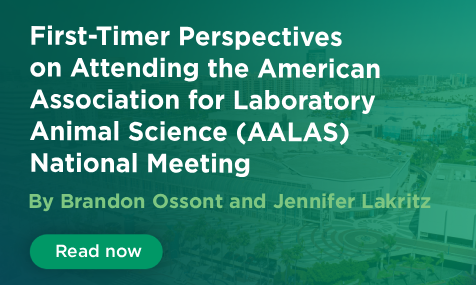Pharmacokinetics, Pharmacodynamics and Toxicokinetics Demystified
Understanding the effects of a drug, and how it interacts with the body, and vice versa, is critical to ensure it is safe for human use. This is where pharmacokinetic (PK), pharmacodynamic (PD), and toxicokinetic (TK) analyses step in. The collection and analysis of this data account for approximately 25% of the contents of a drug package, insert, or label, while the additional toxicokinetic studies can provide critical information to inform no-effect levels (NOEL—the level of exposure to a substance above which humans should not be exposed), human equivalent doses (HED), and PK/PD drivers.
This article will explore the purpose of all three types of analysis, and how they are used in early drug development.
THE DIFFERENCE BETWEEN PHARMACOKINETICS AND PHARMACODYNAMICS
Pharmacokinetics is defined by how a compound is absorbed, distributed, metabolized, and excreted (ADME), whereas pharmacodynamics measures the ability of a drug to interact with the intended target, leading to a specific effect within the body. Or, simply put, pharmacokinetics refers to the way a drug interacts with the body while pharmacodynamics refers to the effect that a drug has on the body. 
For example, PK can assess the way a pill moves through the body to first-pass metabolism in the liver, and into the systemic circulation (or distribution into the tissue space), before being re-distributed back into the liver. While PD will assess if that pill causes any effects during the distribution phase into the tissue space.
pharmacokinetics
Pharmacokinetics involves the measurement of ADME of small molecule compounds, peptides, or biologics. The ADME processes transform a drug dose administered at a single anatomical site, at a specific time, into a dynamic range of drug concentrations that fluctuate throughout the body, in particular, the systemic circulation, over a period of time. This dynamic range reflects the rise and fall of drug concentrations, influencing the drug's interactions with its target and, consequently, its therapeutic or adverse effects.
PHARMACODYNAMICS
Pharmacodynamic analysis involves the exploration and assessment of pharmacologically active metabolites, pharmacodynamic drug interactions, and the effects of genetics and underlying diseases.
As a drug travels through the bloodstream, it can form a strong bond with the drug-receptor site. This “lock and key” system influences how the drug works and its impact on the system after administration.
HOW PHARMACOKINETICS AND PHARMACODYNAMICS WORK TOGETHER
PK/PD ADME analysis relates drug concentration to its effects, with the latter dependent on the concentration at the drug's target receptors. Working in sync with PK measurements, PD studies yield data on the drug's efficacy and potency, the correlation between its concentration, and observed therapeutic or adverse effects. For instance, dose-response relationships mean that while a pharmacokinetic study determines optimal doses based on the drug’s ADME, pharmacodynamics can evaluate the relationship between drug concentration and its effects, establishing a dose-response curve.
The crucial influence PK/PD can have on modeling and simulation decision-making and drug development risk management depends on the quality of data accessible at specific stages of drug development.
APPLICATION OF PHARMACOKINETIC and PHARMACODYNAMIC ANALYSIS IN NONCLINICAL STUDIES
In nonclinical studies, pharmacokinetic data is utilized at several points, which includes compound selection and lead optimization, involving the evaluation of multiple compounds to identify potential candidates. The PK data is also crucial in dose selection for optimum safety and efficacy assessments. Additionally, pharmacokinetics contribute to understanding metabolism and bioavailability, providing insights into the pathways of a drug.
Besides offering a basis for evaluating changing drug effects over time within a species, pharmacokinetic/pharmacodynamic analysis allows for the evaluation of drug effects between species. The administration of a dose of an investigational drug often produces different effects across subjects within a species or across subjects of different species in translational studies.
Metabolism may happen at different rates, or yield different metabolites in different subjects, and these differences will provide a variety of different profiles of drug and metabolite concentrations and associated behavioral and physiological effects over time. Analyzing drug and metabolite concentrations as the primary independent variables can reveal PK differences across subjects or species, and provides a basis for integrating these differences into interpretation of drug effects.
Altasciences’ scientists are experienced and qualified to perform PK studies in both nonclinical and clinical studies—giving clients continuity, with the opportunity to work with the same scientists across the early phases of their drug development program.

TOXICOKINETICS
The characterization of PK/PD effects starts with toxicokinetic studies in animals. The primary goal of toxicokinetic analysis is to correlate toxicity findings with the corresponding level of exposure to an experimental drug compound. Toxicokinetic studies are often conducted with significantly higher, therapeutically irrelevant, drug concentrations, that are expected to induce toxic effects. The insights gained from such studies can inform considerations for safer dosing in later nonclinical and clinical phases of the drug development process.
The differences in dosages between the two study types also lead to technological changes in factors like solubility, absorption, pre-systemic clearance, protein binding, and metabolism. These changes, influenced by dose amount, underscore significant distinctions in the design and interpretation of the studies.
An effective approach to translational drug development involves the careful selection and implementation of nonclinical models, in accordance with standard conditions. PK and PD scientists, biostatisticians, and clinical trial teams leverage the data derived from these studies to shape the design of clinical trials. In human trial doses, scientists examine and evaluate nonclinical TK data to ensure they meet the standards laid out in FDA guidance M3(R2) Nonclinical Safety Studies—and so, the maximum recommended starting dose for human study participants utilizes nonclinical no observable adverse effect (NOAEL) data in relevant animal species, adjusted to human equivalent dose.
Dose scaling utilizes either allometric scaling or modeling/simulation with specialized software to scale between species and simulate across different populations. The selection of toxicity assessments for clinical trials is informed by nonclinical data, ensuring that limitations identified in animal studies are effectively addressed in subsequent human investigations.
The choice of efficacy PD biomarkers in clinical trials is based on nonclinical evidence of the drug hitting its target, which is particularly crucial in fields like oncology and neurodegenerative diseases. For central nervous system (CNS)-active drugs, various PD assessments are available to thoroughly evaluate cognitive and behavioral impacts.
ALTASCIENCES’ PHARMACOKINETIC, PHARMACODYNAMIC, AND TOXICOKINETIC CAPABILITIES
At Altasciences, we can perform primary screening of compounds for pharmacological efficacy in rodent and non-rodent species to help you select the right candidates for development.
All PK/PD and toxicokinetic services are conducted in accordance with FDA, Health Canada, EMA, and ICH guidelines, and with teams trained to be both GCP and GLP compliant. We routinely customize outputs based on client requests, including the possibility of obtaining interim results. Approximately two thirds of the nonclinical studies conducted at Altasciences are GLP, in support of IND applications.
As a CRO/CDMO with integrated nonclinical to clinical capabilities and our own bioanalytical laboratories and manufacturing facilities, Altasciences can significantly accelerate the advancement to first-in-human trials. With fewer handoffs, fewer supplier negotiations, and fewer confidentiality agreements to finalize, data can flow quickly and efficiently to enable agile and flexible drug development.
bioanalytical laboratories and manufacturing facilities, Altasciences can significantly accelerate the advancement to first-in-human trials. With fewer handoffs, fewer supplier negotiations, and fewer confidentiality agreements to finalize, data can flow quickly and efficiently to enable agile and flexible drug development.
Take a closer look at the collection and use of PK/PD and TK data in early-phase drug development in Issue 34 of The Altascientist. Also included is a scenario case study on how PK/PD experts can use nonclinical data to improve clinical trial design.
This article was originally posted in January, 2024.



